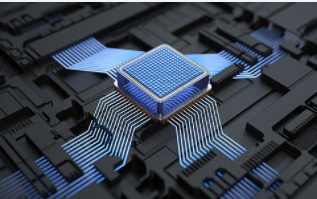In PCB Design Skills: PCB Design Wiring Skills Questions and Answers, we introduced theoretical conflicts, solving signal integrity problems, and high-speed differential signal wiring. Continue to update below.
1. Question: To improve the anti-interference performance, apart from separating the analog ground and digital ground and connecting only at one point of the power supply, the ground wire and power wire are thickened, and I hope to give some good comments and suggestions!
Answer: In addition to the ground isolation, also pay attention to the power supply of the analog circuit part. If the power supply is shared with the digital circuit, it is better to add a filter circuit. In addition, the digital signal and the analog signal should not be interlaced, especially not across the divided ground (moat).
PCB design skills: PCB design and wiring skills quiz

2. Regarding the problem of copper grounding in the blank area of the signal layer in high-speed PCB design
Question: In high-speed PCB design, the blank area of the signal layer can be coated with copper. So, should the copper of multiple signal layers be grounded, or half of the ground and half of the power supply?
Answer: Generally, most of the copper coating in the blank area is grounding. Just pay attention to the distance between the copper and the signal line when applying copper next to the high-speed signal line, because the applied copper will reduce the characteristic impedance of the trace a little. Also be careful not to affect the characteristic impedance of its layer, for example in the structure of the dual stripline.
3. The matching problem of high-speed signal lines
Question: In the layout of high-speed boards (such as p4 motherboards), why do high-speed signal lines (such as cpu data and address signal lines) need to be matched? Hysteresis) is determined by what factors?
Answer: The main reason for the characteristic impedance matching of the trace is to avoid the reflection caused by the high-speed transmission line effect from affecting the signal integrity and flight time. In other words, if it does not match, the signal will be reflected to affect its quality. The length range of all traces is set according to the timing requirements. There are many factors that affect the signal delay time, and the trace length is only one of them. P4 requires that the length of certain signal lines should be within a certain range. It is the timing margin calculated according to the transmission mode (common clock or source synchronous) used by the signal, and a part of the allowable error of the trace length is allocated.
4. Question: Can test points be automatically generated by software on high-density printed boards under normal circumstances to meet the test requirements of mass production? Will adding test points affect the quality of high-speed signals?
Answer: Generally, whether the test points automatically generated by the software meet the test requirements depends on whether the specifications for adding test points meet the requirements of the test equipment. In addition, if the PCB traces are too dense and the specification for adding test points is relatively strict, there may be no way to automatically add test points to each segment of the line. Of course, you need to manually fill in the places to be tested. Whether it will affect the signal quality depends on the method of adding test points and how fast the signal is. Basically, additional test points (not using the existing via or DIP pin as test points) may be added to the line or pulled out a short line from the line. The former is equivalent to adding a small capacitor on the line, while the latter is an extra branch. Both of these conditions will affect the high-speed signal more or less, and the degree of the effect is related to the frequency speed of the signal and the edge rate of the signal. The magnitude of the impact can be known through simulation. In principle, the smaller the test point, the better (of course, it must meet the requirements of the test tool) the shorter the branch, the better.